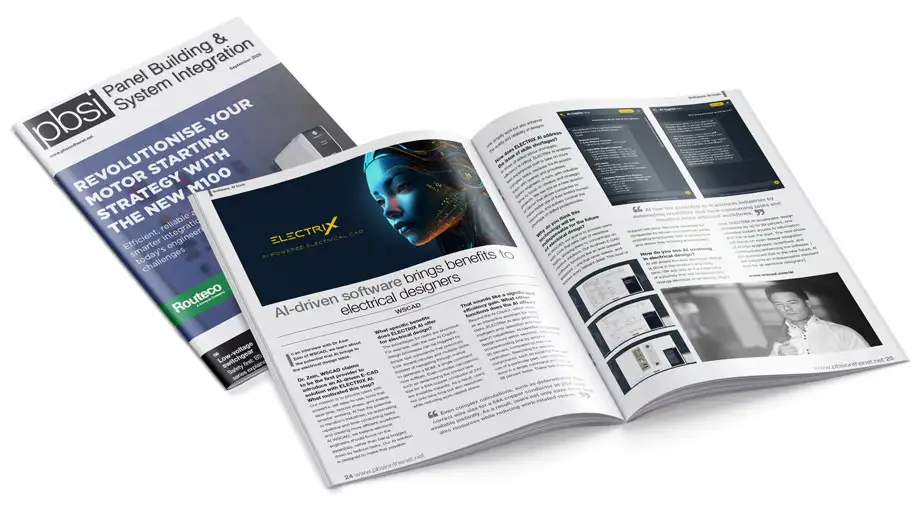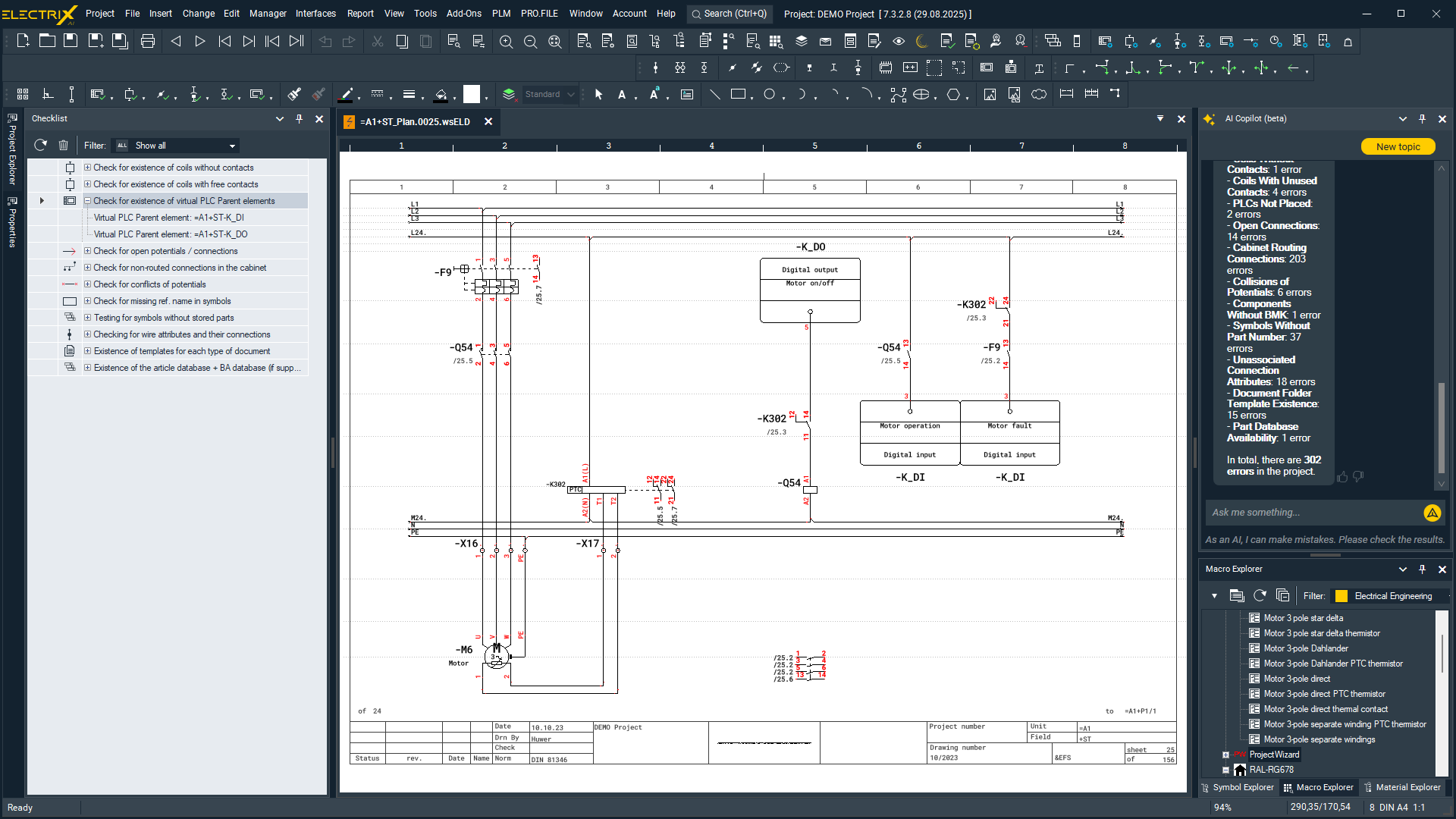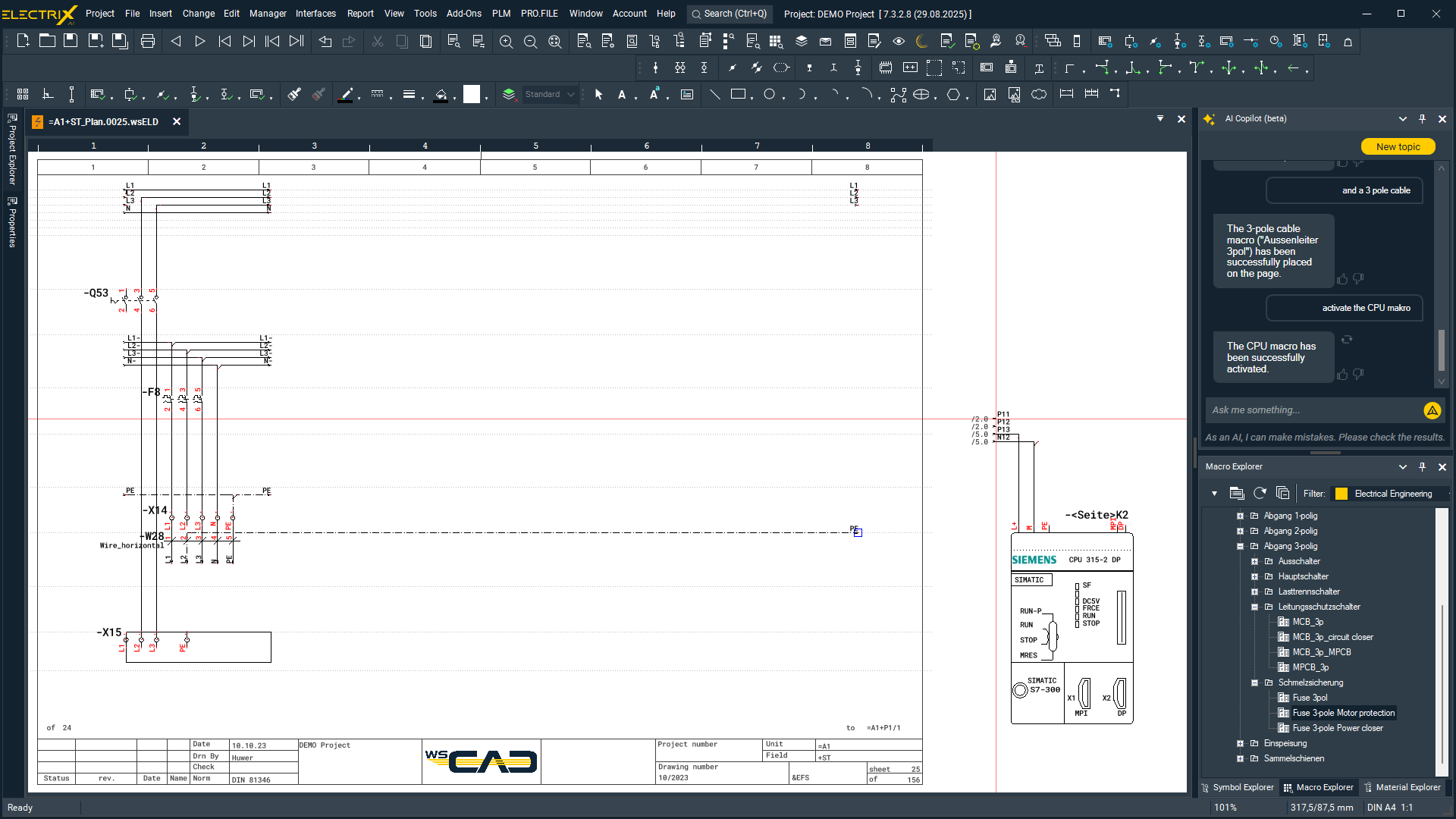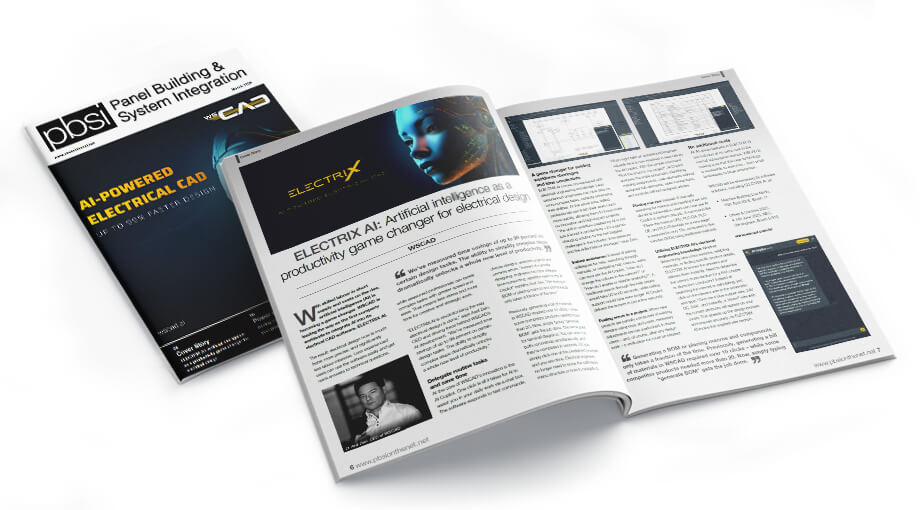
Interview with CEO of WSCAD Dr Axel Zein in PBSI – Panel Buidling & System Integration (09-2025)
In an interview with Dr Axel Zein of WSCAD, we learn about the potential that AI brings to the electrical design table.

A. Zein: Our mission is to provide users with powerful, yet easy-to-use, tools that save time, reduce stress, and enable smarter working. AI has the potential to transform industries, by automating repetitive and time-consuming tasks and creating more efficient workflows. At WSCAD, we believe electrical engineers should focus on the essentials, rather than being bogged down by tedious tasks. Our AI solution is designed to make that possible.
What specific benefits does ELECTRIX AI offer for electrical design?
A. Zein: The advantages for users are enormous. For example, with the new AI Copilot, design processes can be triggered by simple text commands that previously took several minutes and multiple clicks. Instead of navigating through menus to generate a BOM, a single command now suffices. Even complex calculations, such as determining the correct wire size for a 64A copper conductor at 24V, are available instantly. As a result, users not only save time but also resources, while reducing work-related stress.
That sounds like a significant efficiency gain. What other functions does the ELECTRIX AI offer?
A. Zein: Beyond the AI Copilot, which acts as an interactive assistant for daily tasks, ELECTRIX AI also provides intelligent error detection and fast search capabilities. AI identifies potential design errors within seconds, reducing troubleshooting time by around 90 percent, compared to manual verification. Searching for specific components, such as locating the last use of a particular part, can now be done in a single command and up to 98 percent faster. These features not only simplify work but also enhance the quality and reliability of designs.
How does ELECTRIX AI address the issue of skills shortages?
A. Zein: In times of skilled labour shortages, efficiency is critical. ELECTRIX AI enables less experienced staff to take on more complex tasks, because the AI assists them with queries and processes. Senior engineers, in turn, gain valuable time to focus on creative and strategic projects. We see this as a new division of labour that allows companies to make better use of their limited human resources, and actively combat the shortage of skilled professionals.
Why do you think this technology will be indispensable for the future of electrical design?
A. Zein: WSCAD, our goal is to provide users with tools that take care of repetitive tasks, allowing them to concentrate on creative solutions. Our AI-driven E-CAD software functions like an ever-present assistant – one that never sleeps, and knows every relevant detail. This level of support will soon become essential for companies to remain competitive, while providing employees with a productive and stress-free working environment.
How do you see AI evolving in electrical design?
A. Zein: AI will shape the way electrical design is done in the medium and long term. We are only at the beginning of a journey that will fundamentally change electrical engineering. Right now, ELECTRIX AI accelerates design processes by up to 99 percent, and provides instant access to information. But this is just the start. The next phase will focus on even deeper integration of AI into engineers’ workflows, and continuously enhancing the software. I am convinced that in the near future, AI will become an indispensable standard tool for all electrical designers.









